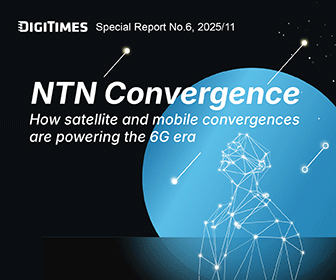Taiwan-based LCD company AU Optronics (AUO) has become the seventh-largest company by profit in the DIGITIMES ASC 100 ranking.
In 2021, the ongoing COVID-19 pandemic posed many challenges to businesses, causing market and supply chain disruptions, including material shortages and port congestion. The pandemic gave rise to the stay-at-home economy in the first half of 2021, resulting in strong demand for consumer products. However, as the pandemic began to ease in the second half, demand shifted toward commercial equipment and business application products. Quick changes in the market put the adaptability of companies to the test.
By proactively adjusting its business strategy, AUO recorded record-high profits in 2021. AUO's 2021 consolidated revenue reached NT$370.7 billion (US$12.47 billion), a nearly NT$100 billion increase over 2020, with the net income attributable to the parent reaching NT$61.33 billion.
Competition in the panel industry is fierce, but the current industry structure is very different from that in the past: China now accounts for half of all global LCD panel production capacity.
To cope with such structural changes, AUO has been devising strategies to transform itself, and its latest AUO Next strategy is meant to transcend beyond the LCD sector, according company chairman Paul Peng.

AUO chairman Paul Peng.
Photo: DIGITIMES
In 2014, AUO started its Smart Investment strategy, which meant investing in high-quality and high-value production capacity. The next step was developing its biaxial transformation "Go Premium, Go Vertical" strategy.
In addition to expanding high-quality production capacity, these two strategies also work to actively develop new products and services, as well as push diversified applications in five fields: smart medicine, smart manufacturing, smart entertainment, smart retail, and smart transportation. AUO is also working to create a sustainable ecosystem.
Through its "Go Premium" strategy, with panels as its core product, AUO aims to develop differentiated products and raise the unit value to bring about stable profit, as well as prop up investment in technology, production capacity, and new businesses.
AUO has accumulated years of experience and capabilities with customers, technology, and management, continuously developing high-end and high value-added products, developing 8K, borderless televisions, gaming notebooks, miniLED, and microLED, as well as customized products for commercial, industrial, and automotive use. The price and profit margin for these high-value products are more stable, accounts for more than 50% of revenue, and are expected to gradually increase in the future.
The "Go Vertical" aspect of the strategy focuses on technology, integrating AIoT applications with various fields and digital transformation opportunities within the industry. By gradually building ecosystems for smart retail, smart medicine, smart entertainment, smart manufacturing, and smart transportation, and integrating hardware, software, and services, AUO will not only be able to provide panels but also a full range of products to resolve user problems.
Take smart retail for example. In 2018, AUO acquired ComQi, a US-based digital signage and content management company. Then, in 2020, AUO acquired financial and retail content execution company John Ryan to integrate digital retail and content business opportunities. In the future, along with subsidiary Space4M, AUO will use its subsidiaries to expand in this space globally.
On the smart manufacturing front, over the years AUO has used artificial intelligence (AI) and the Internet of Things (IoT) to optimize production lines and factories. With numerous successful cases under its belt, AUO established subsidiaries AUO MegaInsights and Edgetech in 2018. Additionally, with strategic partners such as Adlink Technology, AUO is also able to provide customers with smart manufacturing related services.
In 2021, AUO officially demerged its general display and public information display businesses to establish wholly owned subsidiary AUO Display Plus. Remote learning and hybrid teaching have become new normals due to the pandemic, resulting in traditional classrooms also needing to make technology upgrades. To address the smart education demand, AUO Display Plus acquired Jector Digital in 2021 and experienced rapid growth.
AUO's operations in these various fields have already begun to take shape. Although the current revenue contribution is only around 1%, they are expected to grow rapidly in the future. The target revenue ratio in the mid-to-long term is more than 20%.
AUO is also actively working toward reducing carbon emissions. In addition to following best practices set by the Science Based Targets initiative (SBTi), it has developed a plan to reduce yearly total carbon emissions. AUO has also become a member of the global renewable energy initiative RE100, committing to the use of 100% renewable energy by 2050 and working toward a net-zero goal.
Over the past decade, AUO has brought in an average yearly cash flow of NT$20 billion that has enabled its value transformation. Along with its "biaxial transformation" strategy, which has allowed its revenue to continue growing, it also hopes to create relatively stable profit and further reduce the impacts of the panel business cycle.
As part of its AUO Next transformation strategy, the company will continue to diversify its business development in the future. AUO chairman and CEO Paul Peng hopes that one day the market will see that AUO is not just a panel company.
About ASC100:
Asia Supply Chain 100 (ASC100) 2022 ranks the top 100 Asian tech companies, focusing on the industrial, automobile, electronics, information & communication technology segments, by their revenue in 2021. The top 100 companies were able to manage uncertainties and succeed. Based on the rankings, DIGITIMES Asia also summed up the findings and insights in a series of articles.



